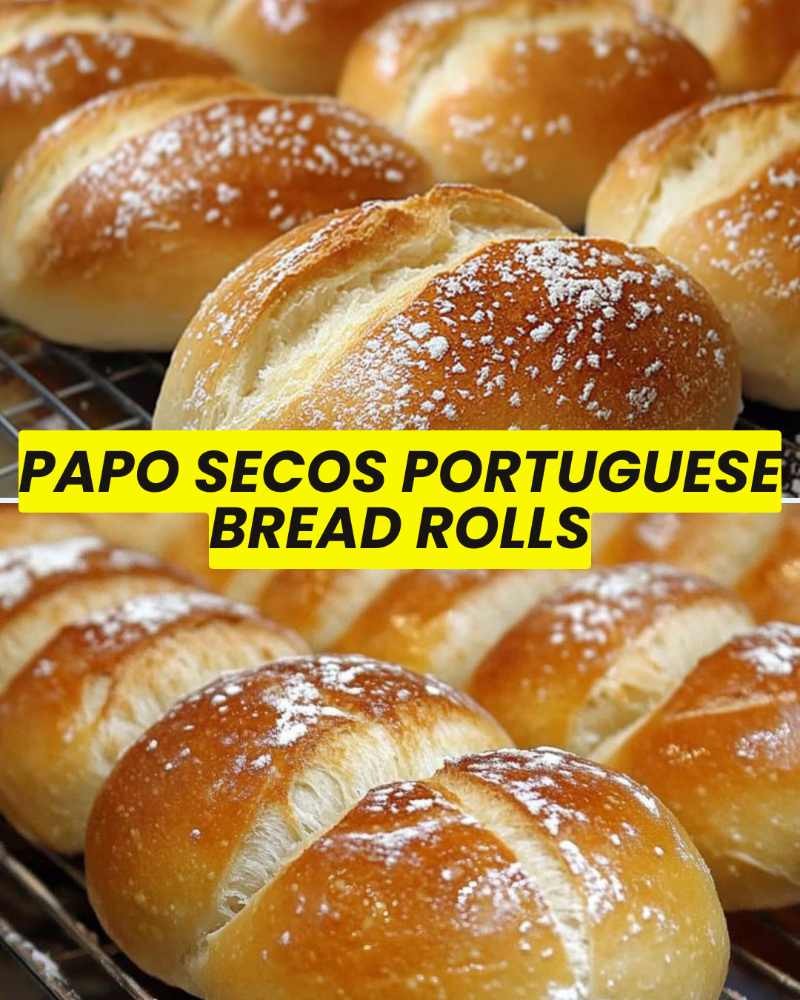Papo Secos Portuguese Bread Rolls Recipe
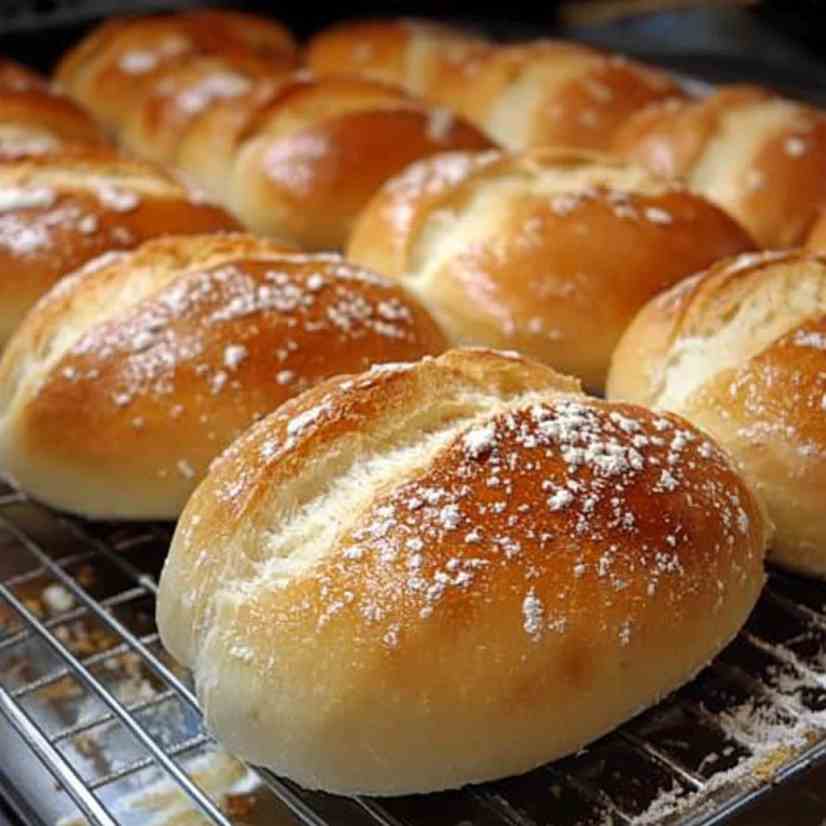
Make sure to like Living Green and Frugally on Facebook, Shop at Amazon to help support my site and explore our PINTEREST BOARDS for innovative ways you can become self-sufficient.
When you think of Portuguese cuisine, delicious bread rolls like Papo Secos quickly come to mind. These traditional Portuguese bread rolls are known for their light, airy texture, and delightfully crispy crust, making them the perfect companion for soups, sandwiches, or as a side to your favorite meals. With a history dating back centuries, Papo Secos are a beloved staple in Portuguese bakeries and homes.
This easy-to-follow recipe will bring the taste of Portugal into your kitchen, giving you a fresh batch of these soft, slightly chewy rolls that are ideal for everyday meals or special occasions. Whether you’re a novice baker or have some experience under your belt, this recipe will guide you through the steps to create the perfect batch of Papo Secos at home.
Why You’ll Love This Recipe:
- Authentic Flavor: This recipe captures the traditional taste and texture of Portuguese Papo Secos.
- Versatile Use: These rolls are great for sandwiches, dipping in soup, or as an everyday dinner roll.
- Beginner-Friendly: The steps are easy to follow, and with a bit of patience, you’ll achieve bakery-quality results.
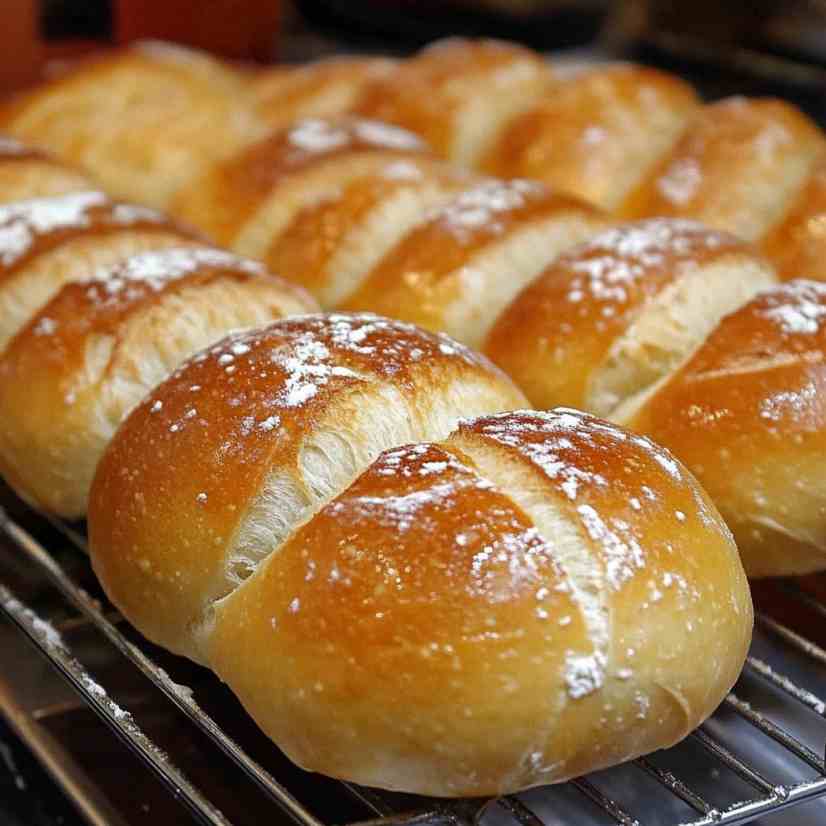
Recipe Tips for Success:
- Use Bread Flour for a Chewier Texture: Bread flour has a higher protein content than all-purpose flour, which helps give these rolls their signature chewiness. You can substitute all-purpose flour, but the texture might be slightly softer.
- Create Steam for a Crispy Crust: To achieve that perfect crispy crust, place a small pan of water at the bottom of the oven while the rolls bake. The steam will help the crust form while keeping the inside soft and fluffy.
- Shape with Care: The traditional shape of Papo Secos involves a pinched center that helps the rolls split open naturally. Use the edge of your hand or a blunt object to press down in the center of the dough when shaping.
- Patience Is Key: Don’t rush the rising times! Allowing the dough to fully rise and proof ensures the best texture and structure. Keep the dough in a warm place for the best results.
- Storing & Freezing: These rolls can be stored in an airtight container for up to 2 days, but they freeze beautifully too. Freeze them in a single layer on a baking sheet, then transfer to a freezer bag once frozen. Reheat in the oven at 350°F (175°C) for a few minutes to regain their freshness.
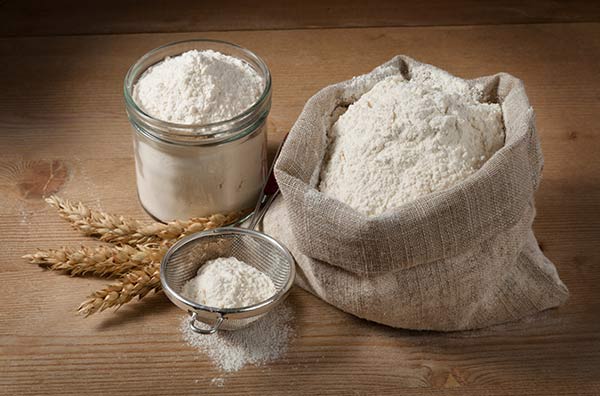
Papo Secos Portuguese Bread Rolls Recipe
Ingredients:
- 4 cups bread flour (or all-purpose flour)
- 1 ½ teaspoons salt
- 1 tablespoon sugar
- 1 package (2 ¼ teaspoons) active dry yeast
- 1 ¼ cups warm water (110°F/45°C)
- 2 tablespoons olive oil
- 1 teaspoon butter (for greasing)
Instructions:
- Activate the Yeast: In a small bowl, combine the warm water, yeast, and sugar. Stir gently and let it sit for about 10 minutes until it becomes frothy.
- Mix the Dough: In a large mixing bowl, combine the flour and salt. Slowly pour in the yeast mixture and olive oil. Stir until a rough dough forms.
- Knead the Dough: Transfer the dough onto a floured surface and knead for about 8-10 minutes, or until smooth and elastic. If the dough is too sticky, add a little more flour.
- First Rise: Lightly grease a large bowl with butter and place the dough inside. Cover the bowl with a damp towel and let the dough rise in a warm place for 1 hour or until it doubles in size.
- Shape the Rolls: After the dough has risen, punch it down to release air. Divide the dough into 8 equal portions. Roll each portion into a ball, then use the side of your hand to gently press a line down the middle of each roll, creating the traditional Papo Secos shape.
- Second Rise: Place the shaped rolls onto a parchment-lined baking sheet, leaving space between them. Cover again with a towel and let rise for another 30-45 minutes.
- Preheat the Oven: Preheat your oven to 425°F (220°C). Place a small oven-safe dish with water on the bottom rack to create steam.
- Bake the Rolls: Bake the rolls on the middle rack for 15-20 minutes, or until golden brown. You’ll know they’re ready when they sound hollow when tapped on the bottom.
- Cool and Serve: Remove the rolls from the oven and let them cool on a wire rack. Serve warm or at room temperature.
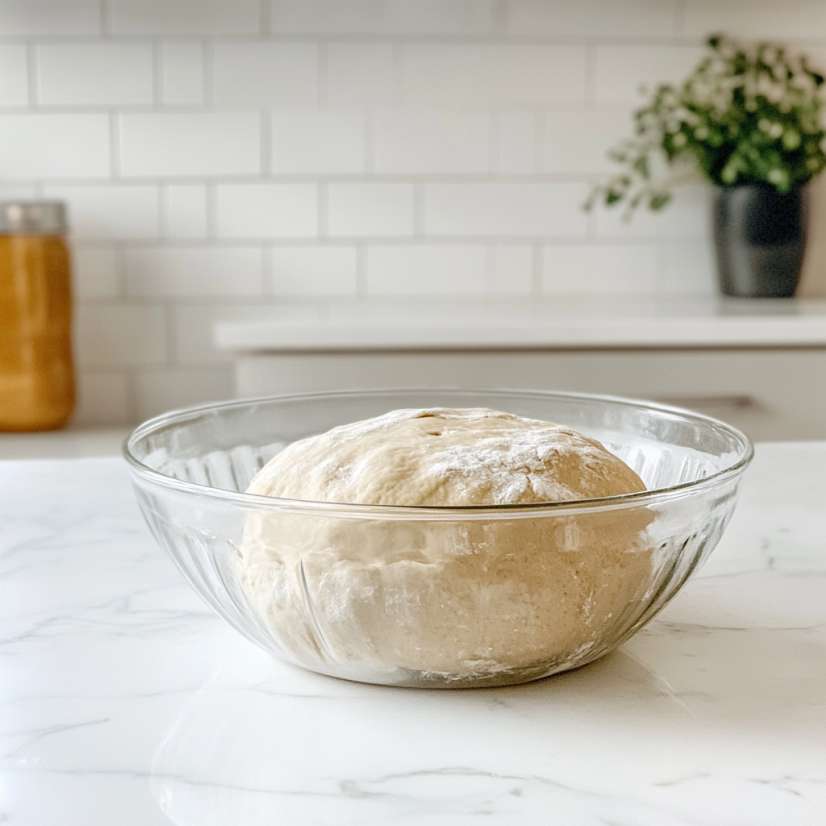
Frequently Asked Questions (FAQs)
Q: Can I use instant yeast instead of active dry yeast?
A: Yes, you can substitute instant yeast for active dry yeast in this recipe. There’s no need to proof instant yeast; simply mix it directly into the dry ingredients. The rise time may also be slightly shorter.
Q: How do I store leftover Papo Secos?
A: Store leftover rolls in an airtight container or plastic bag at room temperature for up to 2 days. For longer storage, freeze them, and reheat in the oven for a fresh-baked taste.
Q: Can I make these rolls ahead of time?
A: Yes, you can prepare the dough and let it rise overnight in the refrigerator for a slower, more developed flavor. The next day, allow the dough to come to room temperature, shape the rolls, and proceed with the recipe as directed.
Q: My rolls didn’t rise much. What went wrong?
A: If your rolls didn’t rise as expected, it could be due to old or inactive yeast, or perhaps the water used to activate the yeast was too hot or too cold. Double-check your yeast’s expiration date and make sure the water temperature is just warm to the touch.
Q: Why is the crust not as crispy as I wanted?
A: The secret to a crispy crust is steam in the oven. If your crust isn’t as crispy as you’d like, make sure you’re adding water to the oven for steam. Also, baking on a high heat (425°F or higher) helps to develop that desired crust.
Final Thoughts
There’s something magical about baking bread, and with this Papo Secos recipe, you can bring a taste of Portugal into your home. These rolls are versatile, delicious, and perfect for any meal. Whether you’re enjoying them fresh out of the oven with a pat of butter, or using them for sandwiches, these rolls are sure to become a family favorite.
Be sure to experiment with toppings like sesame seeds, or use them as a base for creative sandwiches. Once you start baking Papo Secos at home, you’ll understand why they’re a beloved part of Portuguese culture!
Pin for later!
